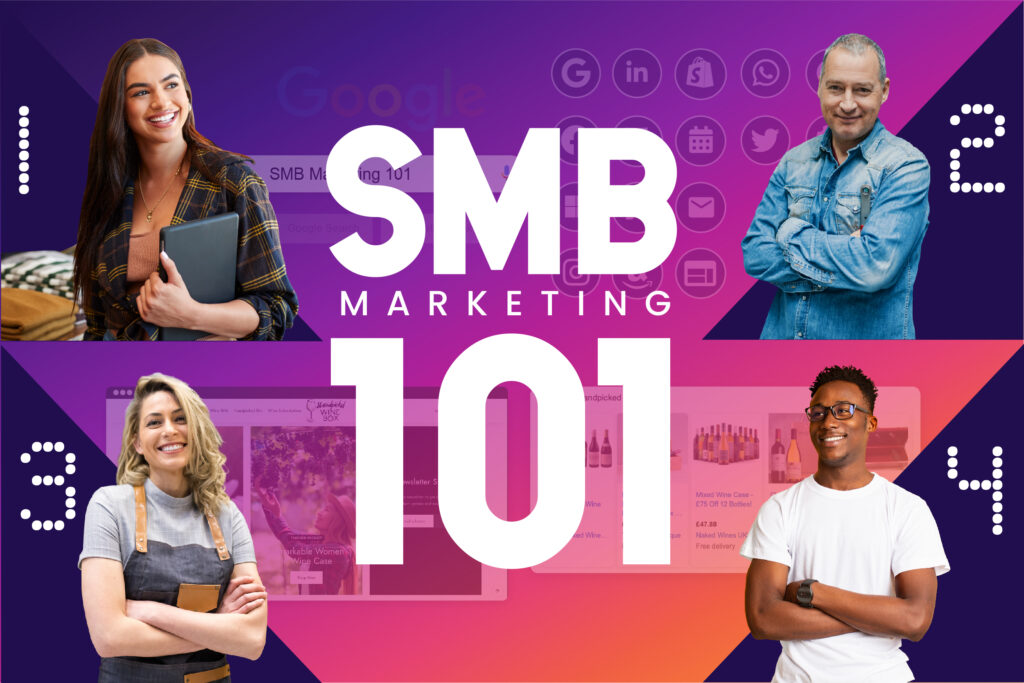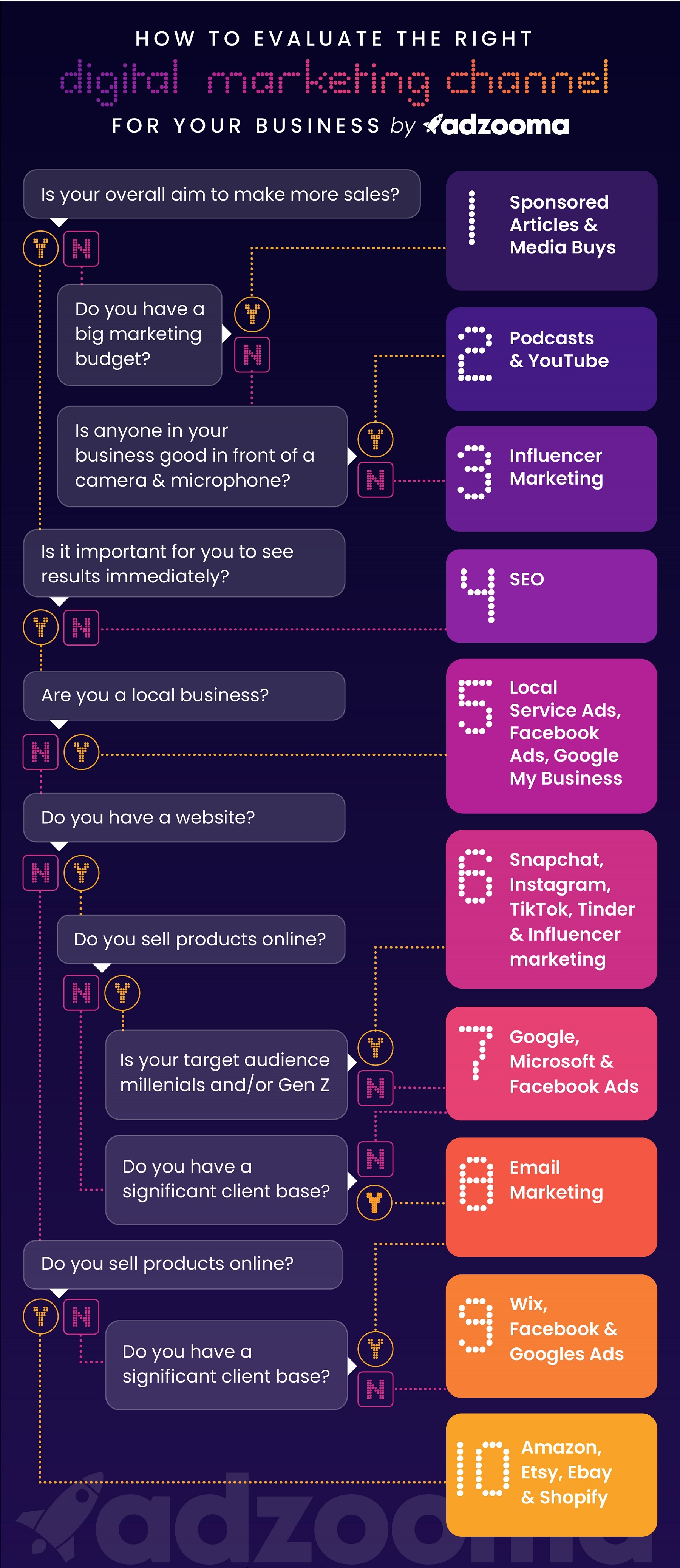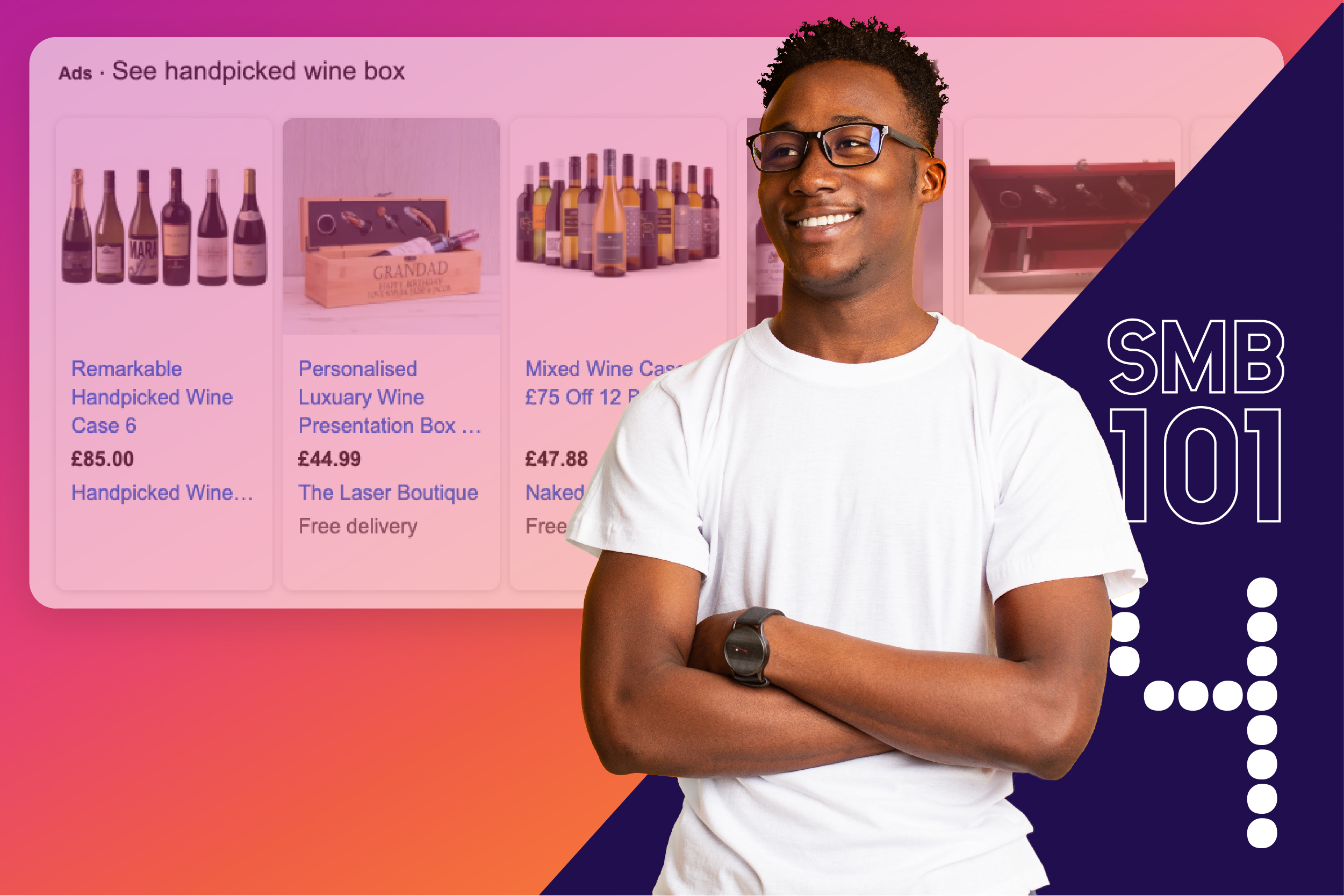Click through for part 1, part 2 or part 3.
As you can see from this series so far, there is no easy switch to flick to make digital marketing a success.
To truly do things right, you need to put the hard work in before you even get started on sending traffic to your site.
But if you’ve followed this series throughout, you would have done exactly that. Now, with help from a number of SMB owners, it’s time to look at how you can make your digital marketing work today.

Pay-Per-Click (PPC)
If you’re looking to drive traffic to your site right away, there is no better option out there than PPC advertising.
PPC consists of any kind of advertising where you pay every time your ad is clicked. It’s pretty much the overriding form in which you pay for advertising online due to its fairness, which derives from only paying once the ad has taken someone to your website. Hence the name, Pay Per Click advertising.
This type of advertising can exist on search engines like Google and Microsoft Bing, and also on social media like Facebook, Instagram and LinkedIn.
Google Ads is usually the best place to start. According to Google, for every $1 spent on Google Ads, an average of $8 is made in revenue, and with a market share of nearly 80%, the audience is enormous so you can reach every type of person.
“We wanted to appear on searches and ensure people were aware of us and our products, so we decided to go with Google Ads,” says the CEO of Designerwear, Ben Wallington.
“It was a Google Ads campaign which resulted in a 45% growth rate in our sales revenue and a conversion rate of 2%. There are several other modes of digital marketing today, but Google Ads remains the powerful platform it always was.”
So why is it so effective? There’s a few reasons:
- You can get your ads live almost immediately
- You have extensive targeting options
- You only pay when your ad is clicked (prices vary between $1 to $6 on average, depending on what industry you’re in)
But the biggest reason is the power of the keyword.
As Ben alluded to above, the keyword tells you what someone wants, when they want it and you don’t get that powerful intent in any other form of advertising. You can do it with SEO, but as we discussed in part 3, this is a long term venture, whereas with Google Ads, you can start seeing results immediately. And in recent years it’s become a lot more intuitive.
“I’m a lawyer without a digital marketing background, so I started very simply using Google Ads to build some traction for my business online,” says David Aylor, the founder of David Aylor Law Offices.
“I love the system’s Smart Campaigns, which uses AI to build an ad for you and determine your best strategies. It took the guesswork out of the process completely and led to some pretty great results and a reasonable price tag.”
However, it’s wise not to go in gung ho from the start, as Brian Anderson, the founder of My Supplement Store explains:
“Our first stab at digital marketing was with Google Adwords [Former name of Google Ads],” he says.
“We spent way too much and didn’t know how to track if it was working or not. It most likely wasn’t even set up correctly. We just looked at traffic. Looking back, we should have hired someone to help set it up for us.”
These days there are free tools out there like Adzooma that make it much easier for those starting on Google, Microsoft or Facebook to get to grips with the platforms, because as Brian goes on to say, they are super effective when they work well:
“Over time though, we learned more about Google Adwords and now spend about $10k per month. We sell over $50k, so it is doing quite well for us,” he explains.
You should also have a read of our free Ultimate Guide to Google Ads ebook too. That’ll guide you through every step of the journey in creating great Google Ad campaigns.
But it’s not just advertising on search engines that falls into the bracket of PPC, you also have:
- Display – ads displayed on third party websites usually in the form of imagery
- Social media – ads shown on social media websites like Facebook, Twitter or LinkedIn
- Remarketing – ads targeted at users who previously visited your website
- Shopping – ads that typically appear in a carousel format on the likes of Google, Microsoft Bing or Amazon
There are so many targeting options for these kinds of ads, especially on Facebook which makes use of their vast swathes of user profile data to help you to target even the most granular of niches.
But on top of Google and Facebook, you also have the option of Twitter, Microsoft Bing, Snapchat, Instagram, TikTok, LinkedIn, and so much more.
Each one appeals to a different type of audience – Facebook is great for SMBs, Twitter is great for publishers, Microsoft Bing is excellent for the more affluent audience, LinkedIn is great for B2B businesses, Snapchat, TikTok and Instagram is great the for the gen z and millennial audience, while Google is just a catch all which is home to 3.5 billion searches a day.
As we talked about in part 2, follow the infographic through to its conclusion, and decide for yourself what channel you want to go for.

You can read more about why each channel is best for you by clicking here.
Email Marketing
“People that sign up for your email list freely are more likely to convert, or buy one of your items and become customers,” explains the co-founder of Dr. Brite, Dr. Pooneh Ramezani.
That is the big selling point of email marketing. Having access to potentially thousands of receptive people who are interested in what you have to say.
It may seem a little bit old school in 2021, but it’s as effective as ever. In fact, for every $1 you spend on email marketing, you can expect to make an average return of $42.
It’s easy to implement, easy to track and cheap to run. And can generate huge sales.
But you have to build that database up first, as Nate Tsang, the founder of WallStreetZen explains:
“When we first started the website, what we first focused on was creating and growing our database,” he says.
“From strategizing our email marketing to ensuring leads are captured, we keep on ensuring that our database keeps increasing. We also experimented with Google Ads and pop-ups.”
There are many other ways to build that list too including:
- Creating an email opt-in box on your homepage
- Creating a popup form across your whole site
- Adding a checkbox on checkout
- Creating a squeeze page – a page where you send traffic to capture email addresses
- Adding a discount in exchange for an email address
- Sharing it on social media
If you’re looking at getting started, AWeber is a great tool to use. It comes with a drag and drop editor, pre-built templates, sales tracking, plus loads more, and is completely free until you reach over 500 subscribers.
Influencer Marketing
The power of influencer marketing has been known for decades, maybe centuries. But in 2021, with social media being such a huge part of our day to day lives, it’s more powerful than ever and anyone can be an influencer.
“Social media and Instagram, in particular, played a significant role in our business model early on,” explains Dan Potter, the co-founder of CRAFTD London.
“Since we began, we have used influencers to run brand recall, set the tone, and introduce us to a broader audience before launching a new product. Using micro-influencers (100k or fewer followers) because they can dig deeper into the niches and spell an excellent conversion rate has proven successful, as they generally have a more loyal following.”
And that’s the thing. When influencer marketing was prevalent before the digital age you were having to pay celebrities thousands to endorse your product, but now you can pay as little as $20.
You can get them to wear your product on their social media account, you can get them to write a blog, you can get them to review your product on YouTube, you can do whatever you think will work.
Influencer marketing once upon a time was either laughed at or thought to only be for the rich. Now it’s for everyone. And it’s super effective.
Sponsored Articles or Media Buys
Okay, so this one may be for the rich. Sponsored articles or media buys are where you pay to write an article on a publisher’s website or send a newsletter to their database.
There are huge advantages to this as you can imagine. We’ve done it previously with SearchEngineLand where we’ve written about the future of digital marketing and why our product is so important in its future, and then sent out an email to readers advertising our product.
SearchEngineLand has tens of thousands of readers every day with an even bigger email readership, so to put our product in front of so many people at once is a great way of getting customers through the door.
But like I say, it’s not cheap. You can expect to pay between $2k and upwards of $20k depending on where you advertise, but the results are obvious.
So whether it’s something you can afford now or later down the line, it’s definitely worth considering.
Action Points
Get into PPC advertising
- Decide which PPC channel is best for your business by researching the audiences and using our infographic
- Download, read and digest the free Ultimate Guide to Google Ads ebook
- Use Adzooma for free to make the management of your Google, Microsoft and Facebook campaigns much easier
Try out email marketing
- Build up your database by trying things like pop ups, squeeze pages and tick boxes on checkout forms
- Use AWeber for free to manage your database and send email campaigns
Explore influencer marketing
- Have a browse of the influencers and micro-influencers in your industry
- Think of campaigns influencers could get involved with to promote your product or service
Consider sponsored articles or media buys
- Discover the main media publications in your industry
- Speak to their sales team about the cost of a media buy and their audience data
Final Thoughts
I hope you’ve enjoyed this four part journey.
But before we finish, I just want to talk about the importance of not operating within a silo. In this piece especially, we’ve looked at the different types of digital marketing channels where you can be successful, but it’s so important not to get attached to one particular channel.
Opening yourself up across multiple channels may take a little bit more time and effort, but it keeps you agile, it puts you in front of a wider audience, and it allows you steer clear of the whims of one particular company.
“You must determine what kind of digital marketing professional you want to be,” says Danny Veiga from Danny Veiga Marketing.
“For instance, do you want to be a master of one or a jack of all trades? Do you want to focus on social media marketing, or do you want to cover all components of digital marketing. As I moved through the field of digital marketing, I found expertise in social media marketing, SEO, content writing, etc. Start small and take little steps.”
By finding expertise in more than one area, you can then begin to work on short and long term strategies together, as Brad Tousenard, the founder of SpinupWP explains:
“Our content was designed to draw in organic search engine traffic but we knew this would be a medium to long-term strategy. We knew that paid ads could generate us traffic immediately so we prioritized this in the short term. Most of our initial customers come through paid ads. As our site matured more and more of our customers came through organic search and within six months, 37% of our leads were generated from organic search.”
And that’s the key. If you can balance the long term and the short term strategies together, you’re almost guaranteed success.
Now go have fun out there!




